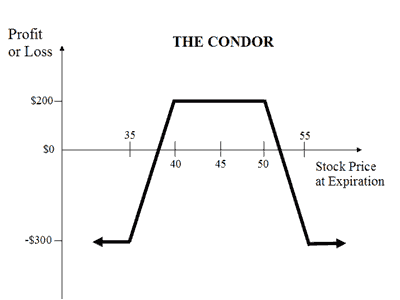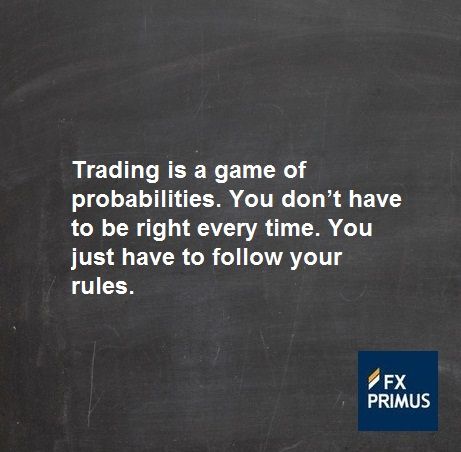24 Oct Why investors need to track a company’s book value?
Contents:


The reason a Kotak Bank or an HDFC Bank enjoys a higher P/BV is not about undervaluation or overvaluation at all. In fact, P/BV allows banks to be classified based on efficiency of use of funds in different P/BV brackets. That is why the P/BV ratio matters a lot more to banks and financials. The normal metrics used to value a company or to compare valuations is the Price / Earnings ratio or the P/E ratio. The P/E ratio shows how much the market is willing to pay for each rupee earned by the company. It is a statement on the quality of the earnings of the company since companies with the same quantum of earnings but a better quality of earnings get a higher P/E ratio valuation.
This could be due to an unfavourable economy, the company’s operational problems, or even the investor’s lapse in judgment. Value investors prefer to invest in such stocks as they believe that the company will perform better in the future, and the market value of the stock will rise. The market value of an asset is based on its price at a particular time, on the financial market. The market value is arrived at by multiplying the market price of the share by the total number of shares outstanding. However, it shall be noted that there is no single P/B ratio that can be considered as ideal for investments.
It includes expenses of capital nature incurred in connection with such purchase or for completing the title of the property. Transfer of capital asset by India Infrastructure Finance Company to an institution established for financing the infrastructure and development. The period of holding of such converted asset shall be reckoned from the date of conversion. B) Date of broker’s note provided such transactions are followed up by delivery of shares and also the transfer deeds. A) Any kind of property held by an assessee, whether or not connected with business or profession of the assessee. Like a company might be on the verge of bankruptcy, but they do not reduce the value of assets with loans secured against them.
However, a price to value of less than 3 is also accepted among value investors. Price to Book Value is a type of valuation ratio which calculates a stock’s intrinsic value. It helps you understand if a stock is undervalued, overvalued or fairly priced. The management may also use the sale and lease-back methods to book profit in the assets and add it to the companies’ reserves. Since the asset values are transparent in the shipping industry, the book value there will be close to the intrinsic value of the company.
It might be due to its enhanced earnings, well-founded and sound management, or any other factor that buoys its market worth. According to conventional accounting approaches, most assets’ values are represented as per their historical figures. It does not account for the actual depreciation and appreciation in values of assets but instead is based on set accounting principles. This phenomenon creates a discrepancy and compromises analysis based on book value.
______ are calculated separately and the unit of payment is per metre length. In case of unsymmetrical wall, no advantage may be claimed by ______ over other method of estimating building works. Companies may depreciate their assets fully to $0 because the __________ is so minimal. About _______% of a building’s construction cost may be considered its scrap value.
In case of non allotment the funds will remain in your bank account. The PBV ratio is most relevant for firms that are close to liquidation. That said, it is still a useful measure, particularly when comparing firms in similar industries. Occasionally, you will find firms with a PBV ratio below one.
What is Book Value Per Share ?
PB ratio can also be negative due to consistently negative cash flows. It is natural for such firms to quote significantly higher than their book value per share. The consistent increase in the book value shows that the company is able to generate enough profit and is also able to reinvest it to generate more profit in the future. The best example for this is MRF, the company with the highest absolute book value figure among the BSE-500 stocks. As per the law, the company has to make provisions for the historical difference while making this switchover.
But low the book value goes on to book value should be accompanied by high return on equity . Only then you can conclude that the stock is truly undervalued. Value Investing is buying undervalued shares and holding them for a long time. The idea is to make humongous profits once markets realise their true value.
Let’s move to a more real-life example of Yes Bank to explain this further
Check your Securities /MF/ Bonds in the consolidated account statement issued by NSDL/CDSL every month. Pay 20% upfront margin of the transaction value to trade in cash market segment. A low Price to Book Value (P/BV) need not necessarily mean a stock is attractive. The market may have refused to value the stock high due to concerns in the quality of book value. Hence, knowing the quality of the book value is more important than just the Price to Book Value (P/BV) as a measure. A company can have financial problems while maintaining a good book value Ratio.
When a company depreciates an asset slower than its market value, it is trying to manipulate its P/B Ratio to lure investors into its value trap. First, investors immediately label it as an undervalued company and dive right into investing in it. Book value per share is also an excellent metric for investors to forecast the future price. Overvalued stocks will generally have a combination of low return on equity and high price to book ratio. Price to book value becomes negative when a company’s liabilities are more than its assets.
Open Demat Account &
It takes the net value of a listed company’s assets, also known as shareholder’s equity, and divides it by the total number of outstanding shares of that organisation. Book value is the accounting value of the firm as reflected in the financial statements. Book value is also the net asset value of a company calculated as total assets minus intangible assets and liabilities. Price to Book Value (P/BV) ratio is a measurement of how much an investor pays for a stock over its book value.
This may only indicate whether a https://1investing.in/ is undervalued or overvalued and must be seen in combination with other factors like the company’s earnings record. Finding the NAV entails subtracting the corporate’s short- and lengthy-time period liabilities from its belongings to search out internet property. Then you’d divide the web assets by the variety of shares of common stock, preferred stock, or bonds to get the NAV per share or per bond. Book value appeals more to worth buyers who take a look at the connection to the stock’s price by using the worth to e-book ratio. Valuing property at historic price prevents overstating an asset’s worth when asset appreciation could also be the results of risky market conditions.
As a result, Rs 10 is reduced from the shareholder’s net worth. In other words, its net worth is wiped out and in no time, an investor’s book value is reduced to zero. Overvaluation of the company’s assets might be another reason its book value is higher than its market price. The company might be substantially undervalued, and investors are not aware of its potential yet.
- Alongside the company’s overall growth and possibilities, the market value also increases, the price investors are willing to pay for given common stocks.
- The book value simply shows the accounting value of the asset while the market value accurately reflects the asset’s current popularity in the market.
- It is a statement on the quality of the earnings of the company since companies with the same quantum of earnings but a better quality of earnings get a higher P/E ratio valuation.
- Both the PE and PCF ratio are computed based on a firm’s operations over a period of time.
- • It depicts a stock’s book value, which is the amount that shareholders will receive in case of liquidation.
- It is essential to look at its assets before investing in them.
There is another reason why P/BV works well in case of banks and financials. As per Basel regulations, banks are required to maintain core capital adequacy as a percentage of their asset books. Hence the P/BV also becomes a proxy for the effective yields on their asset books. Specifically, when it comes to banks and other financials, the P/BV is a very good approximation of comparative metrics. Alongside the company’s overall growth and possibilities, the market value also increases, the price investors are willing to pay for given common stocks. To calculate the book value per share of Wafira Ltd., we need to know the value of the total equity balance, preferred equity of the company and the total number of outstanding shares.
The significance of Book Value while taking an investment decision
The guide value of a company is the whole worth of the company’s property, minus the company’s excellent liabilities. The balance sheet additionally takes under consideration accrued depreciation of those assets, and that helps convey the true value of the assets closer to the quantity used for guide value purposes. Often, guide value is expressed on a per-share basis, dividing the entire shareholder fairness by the number of shares of stock outstanding. Book worth and market value are used to find out if you have made a profit, loss, or broke even on an asset. An asset’s guide value is the same as its carrying value on the steadiness sheet, and companies calculate it netting the asset against its accumulated depreciation.
Furthermore, the average number of shares outstanding is 10 cr. If investors do not have faith in the company’s future and believe that its performance will decay in coming times. Book value per equity share indicates a firm’s net asset value on a per-share basis. It represents the accounting value of a share of a listed company. Often, guide worth is expressed on a per-share basis, dividing the total shareholder fairness by the number of shares of stock outstanding.
Please note that your stock broker has to return the credit balance lying with them, within three working days in case you have not done any transaction within last 30 calendar days. If the P/B ratio is higher than 1.0, the net worth of the company could be bloated. Investors may lose their money in case the company liquidates.
Mankind Pharma Limited IPO – Price, Lot size, Open date, GMP & Review
The book value of an organization is the distinction between that firm’s total assets and complete liabilities. Book worth per share is necessary for worth investors, who pay as a lot consideration to the stability sheet elements of a enterprise as to its revenue assertion elements. They get your hands on companies with stock market prices that aren’t an excessive amount of larger, and even lower, than guide worth per share. The enterprise proven in the figure has issued eight.5 million capital stock shares.
Rithm Capital (RITM) Q1 2023 Earnings Call Transcript – The Motley Fool
Rithm Capital (RITM) Q1 2023 Earnings Call Transcript.
Posted: Thu, 04 May 2023 16:00:30 GMT [source]
We can conclude that buying 40,000 shares increases Book Value per share from INR 10 to INR 12.5. Let us quote an example to understand the workings of book value per share clearly. In fact, it’s pretty useless in industries like Information & Technology . This is an exclusive story available for selected readers only. And if you want to get a sense of how big returns could be, see our list of multibagger stocks here… Equitymaster has a screener which can help you find high growth companies.
Paying A Mortgage? Time To Get Paid: AGNC Investment Corp … – Seeking Alpha
Paying A Mortgage? Time To Get Paid: AGNC Investment Corp ….
Posted: Thu, 04 May 2023 11:35:00 GMT [source]
Book value is the total tangible net assets in the balance sheet of a company after deducting its liabilities. Book value per share is calculated by taking the sum of the company’s assets and subtracting debt, liabilities, and the liquidation price of a preferred stock from this. The result is then divided by the number of outstanding shares of common stock. This could imply that the corporate’s shares trade at many instances their e-book value but should not be thought of overvalued. Book worth, or internet guide worth, is the term used to describe how much a enterprise or asset is price in accordance with its financials.

By evaluating e-book worth to a inventory’s price, you will get a sense of whether investors see its accounting statements as a fair reflection of an organization’s intrinsic price. When e-book worth is divided by the variety of outstanding shares, we get the guide value per share which can be used to make a per-share comparison. Outstanding shares check with a company’s inventory presently held by all its shareholders, together with share blocks held by institutional buyers and restricted shares. For example, if Company XYZ has total belongings of $100 million and complete liabilities of $eighty million, the guide worth of the company is $20 million. In a broad sense, because of this if the corporate sold off its assets and paid down its liabilities, the equity value ornet worthof the enterprise could be $20 million.

Sorry, the comment form is closed at this time.